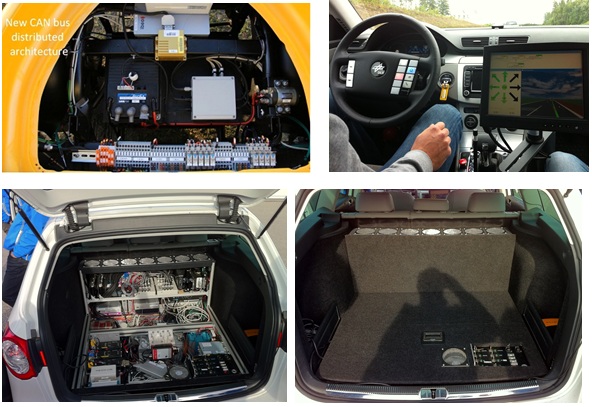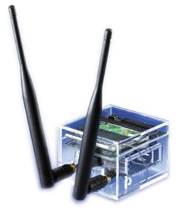Section: New Results
High speed autonomous driving on roads
Participants : Fawzi Nashashibi, Laurent Bouraoui, Paulo Lopes Resende.
In this exceptional year, IMARA-INRIA had a very busy agenda with several scheduled demonstrations in the frameworks of several European projects, especially HAVEit, CityMobil and CityNetMobil.
The HAVEit project final event took place at Boras (Sweden) in June. IMARA was tightly involved in the development of the Joint Demonstrator called FASCar-II. In this demonstrator, IMARA was responsible for the development of the Co-Pilot system. This is the main decisional system that handles the manoeuvres to be executed taking into account the multisensor data fusion sub-system, the driver monitoring system and the infrastructure (data provided by the infrastructure-to-vehicle telecommunications). The system also generates the trajectories to be executed as well the control-command laws to be send to the actuators [40] and provides passive or active assistance to the driver according to the active automation level.
In parallel, IMARA has also developed the “Wireless Infrastructure to Vehicle communication system”. Here, a specific hardware and software systems have been developed to allow V2I and V2V applications integrated on the Joint System demonstrator. This architecture – called the 4GCube – is based on the wireless communications devices and standards (802.11 a/b/g); they are IPv6 / CALM compliant architectures that have been tested with 2.4 GHz and 5 GHz bands, allowing multiple services handling.
The integration and the validation of the Co-pilot system as well as the communication device were done during the Final Event of HAVEit with a tremendous success and with high professional standards. The FASCar was able to demonstrate high driving autonomous skills at high speeds (up to 120 km/h) and was able to demonstrate new advanced features like overtaking mobile and static obstacles.




